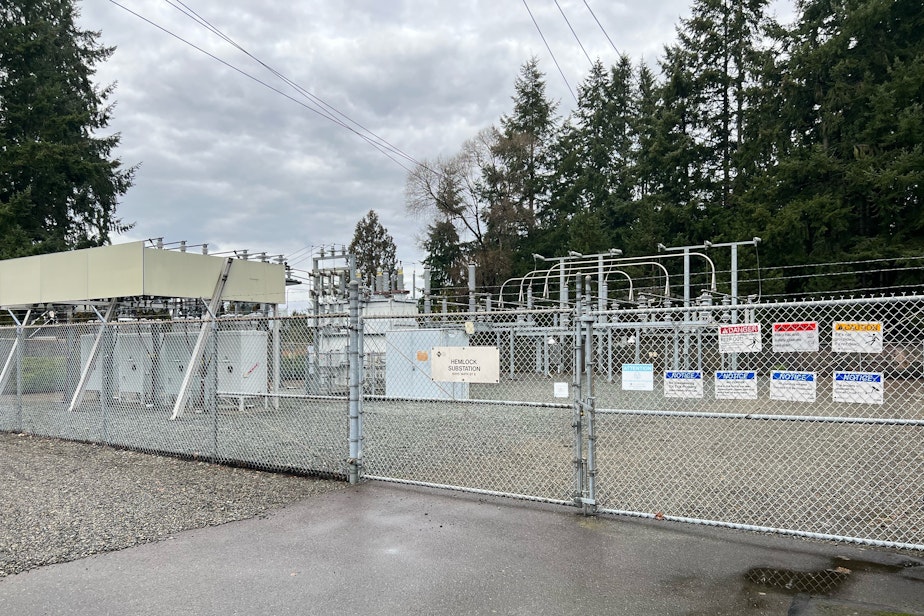Federal investigators charge two Puyallup men for Christmas substation attacks

On Dec. 31, federal prosecutors arrested and charged two Puyallup men for attacks on substations in Pierce County.
Four electrical substations were attacked over Christmas weekend, knocking out power to 15,000 people in Pierce County and causing millions of dollars in damage.
These incidents came just weeks after attacks on two substations in North Carolina cut power to 45,000 people.
Matthew Greenwood, 32, and Jeremy Crahan, 40, have been charged by federal prosecutors with conspiracy to damage energy facilities, which is punishable by up to 20 years in prison. Investigators were led to the two men by a mix of evidence, including tracked cell phone calls and images from a security camera at a Tacoma power station.
All the substations are located in East Pierce County, with three substations attacked in the early morning of Dec. 25 and the final substation attacked after 7 p.m. that evening. Current estimates show that it will take up to 36 months for full repairs to be made at a cost of $3 million. Tacoma Power will use two mobile power units in the meantime.
The complaint from the Department of Justice alleges a burglary by Greenwood and Crahan after the second and third substation attacks.
A reporter for The Seattle Times spoke with Greenwood's girlfriend, Holly Fisher, who is more than eight months pregnant, and who claimed the burglaries were spurred by fears of being unable to support their expected child. She also alleged that Greenwood and Crahan were inspired by recent reports of substation attacks in North Carolina.
Both Greenwood and Carahan are being held in a federal detention center until a Jan. 10 hearing. The investigation into the case is ongoing.
Sponsored
You can listen to the full Soundside interview with The Seattle Times' Hal Bernton by clicking the "play" button on the audio above.
You can read Bernton and his colleague's reporting here, and follow KUOW's reporting here.
Power grid security
Our energy system is comprised of three main components — power plants generating electricity, transmission lines carrying that energy at high voltages, and substations, which convert that electricity into lower voltages for use in businesses and homes.
"The electricity component of the energy sector is easily the most essential of all the critical infrastructures," said Ross Johnson, president of Bridgehead Security Consulting.
Sponsored
There are more than 55,000 substations located throughout the United States, and Johnson says the number of stations and their varied locations has made them largely ignorable.
"People would drive by them every day and not even see them," Johnson said. "They'd become part of the landscape, but that seems to be changing."
Substations have long been targets for copper thieves. Utilities largely warded off those thefts by using a different kind of copper alloy with less value on the resale market.
But security standards were also overhauled after a 2013 attack on a substation outside San Jose, California, which remains unsolved.
"Gunfire has always been extremely rare, but not unknown," Johnson said. "It does happen, but it is, as far as incidents go, very unusual."
Sponsored
Security for long-distance transmission lines are regulated at the federal level by the Federal Energy Regulatory Commission (FERC), while electricity distribution to homes is regulated at the state level. In Washington, that agency is the state Utilities and Transportation Commission.
"All of these agencies are on the same page about the kind of protections that our power grid needs," said Daniel Kirschen, professor at the University of Washington Department of Electrical and Computer Engineering.
Kirschen says it's difficult for utilities to know how much preparation can be made in the face of not just sporadic attacks by individuals, but threats to power reliability like intensifying weather conditions.
"You really have to do this balance of what level of reliability and security do you want, and how much are you willing to pay for it?" Kirschen said. "The question is, how much money do you want to spend on something that happens every 10 years, every 20 years, or may never happen — so it's a difficult question to answer."
The Seattle Times reports that utilities in the region are evaluating the security of the power grid after the recent substation attacks. The Christmas day attacks are in addition to six attacks on the grid throughout Oregon and Washington in mid-November and the attacks about a month later in North Carolina.





